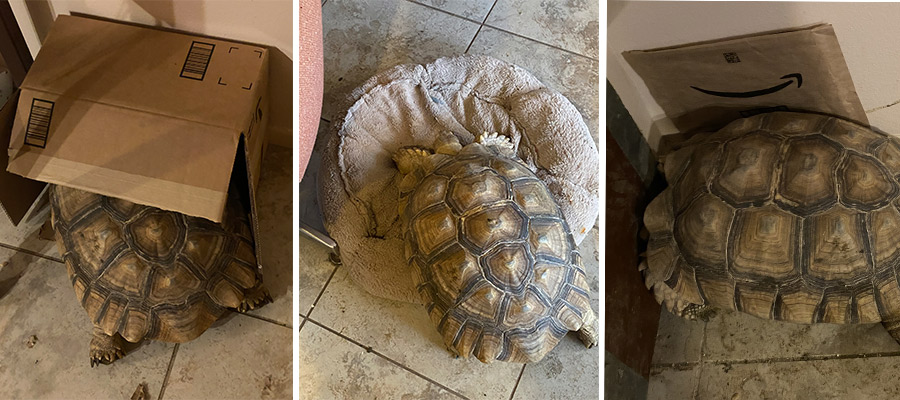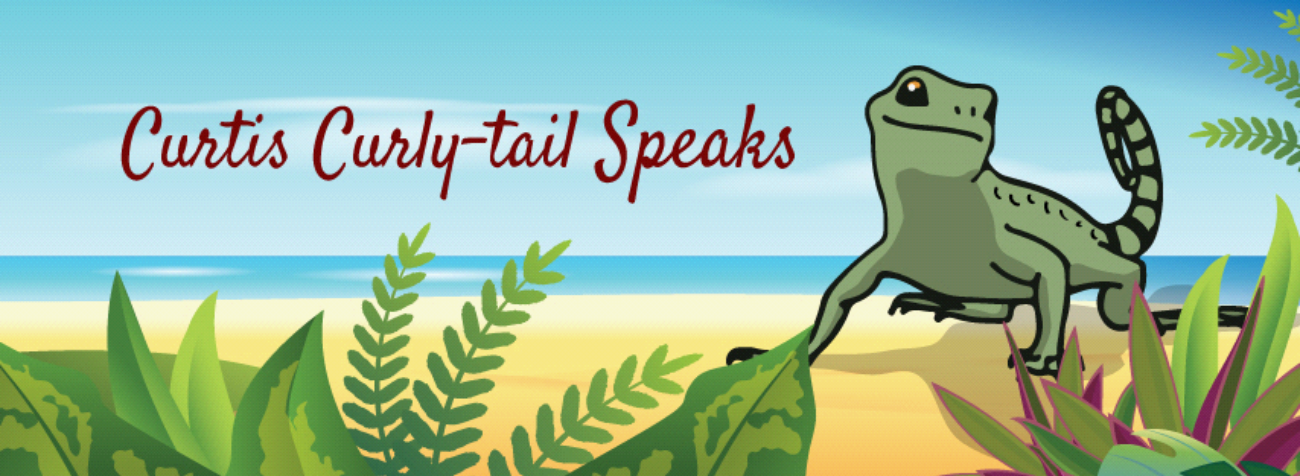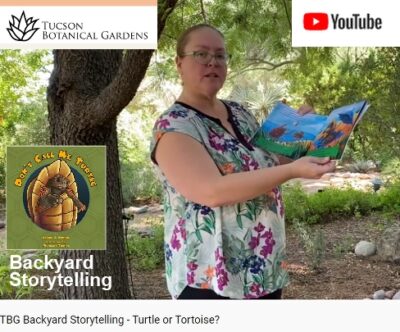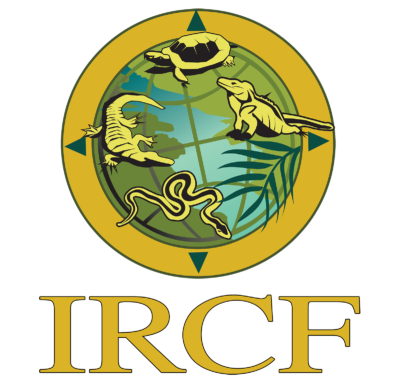Brumation Time!
The summer of 2023 was hotter than usual, even for Tucson in the Sonoran Desert, known for its ‘dry heat.’ Usually, around July and August, the environment gets some relief from the monsoon rains, but this year, they were sparse. Even people like me, who enjoy the heat, were ready for some cooler temperatures, but they were slow in coming. But when they finally arrived, I knew it was brumation time! Well, maybe.
Brumation Time?
Hints of cooler nights led to my Sonoran Desert tortoise, Zoe, requesting her annual entry into the house for brumation. Would she return to her favorite kitchen corner to while away the winter? I let the sulcata tortoise, Cantata, stay outside until she came out for only a few hours in the afternoon. I didn’t want her to brumate in the den she dug in my yard since I doubted she would stay warm enough and might die in the low temperatures. So, in she came.
And then the temps warmed up again! Ugh! Instead of quieting down and finding their winter location, they are roaming, rampaging about the house. Cantata, still feeling the need to dig, scraped the surface of several walls (I guess I’ll have to fix them when I want to sell the house), checking everything for her winter spot. Every corner, every box, occupied or not, and even the dog’s beds (yes, plural) are examined.

However, finally, a bit of rain arrived. People were surprised that the reptiles that had ‘disappeared’ were suddenly out and about. Of most concern were the rattlesnakes. Shouldn’t they be in their dens by now? Even though most rattlers had been finding their winter dens, they couldn’t miss the opportunity to get a good drink of water. In the desert, fresh water is a beautiful thing. You can read about rattlesnake rain behavior in my book, Don’t Make Me Rattle.
Brumation vs. Hibernation
Many ask about the difference between mammals’ hibernation and reptiles’ brumation. A noticeable difference is that ectothermic ‘cold-blooded’ animals brumate, while endothermic ‘warm-blooded’ animals hibernate—similar behaviors but not the same.
Hibernation lasts longer than brumation. Most hibernators are dormant for several months, while reptile brumation may only last a month or two, somewhat sporadic. Brumating animals emerge occasionally, especially in good weather, eating and drinking. They may have to in order to survive the cold period. Hibernating animals don’t eat or drink during their dormancy. Brumating animals usually eat before dormancy, while hibernating animals eat increased amounts of food, building up the fat needed for their dormancy. Unfortunately, the brumators don’t have this extra source of energy.
So, it’s not surprising that reptiles, like rattlers, emerge and move about during warm temperatures and rain. I’ve noticed my tortoises ‘awaken’ as well. For my neighbors concerned about the rattlesnakes’ continued activity, they’re just taking advantage of little bits of good weather to forage for food and water. You really can’t blame them.
I watch my reptiles for clues about the weather. Their activity may be the best indicator of the weather, even indoors. The reptiles know! To learn more about brumation and other tortoise traits, download my educational workbook, which is all about tortoises!
To learn about our latest science-based children’s books and workbooks, to read our latest blog posts about reptiles, birds, cats, and gardening, in a variety of locations, and about how the books come to be, what inspires an author to write, and many more interesting aspects of the publishing business, fill in the box below and we will add you to our email list.
Thank you!



